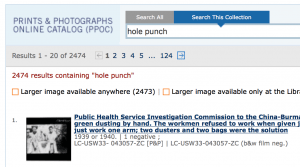Today I needed to move 435 TIFF images from the San Marcos Daily Record Negative Collection into folders based on a section of their filename.
Category Archives: Code
BASH script to copy and rename MARC records
I’ve been finishing up a project that requires a MARC record to be copied into 2 different locations and renamed based on directory names.
This script was written and tested on Windows 7 in Cygwin using the BASH Shell.
Rotating Images with BASH and ImageMagick, take 2
In my last post, I rotated 12 images with non-contiguous filenames like 91, 115, 185. This time, though, I have a set of images with contiguous filenames so I don’t need to type each one in by hand.
I rotated the images with ImageMagick version 6 in Cygwin’s BASH Shell using 1 line of code.
Rotating images with BASH and ImageMagick
I’m on one of our older, Windows 7 computers and need to rotate 12 images 90 degrees clockwise, but I know Adobe Photoshop won’t play well with my 1-bit bitonal scans.
I rotated the images with ImageMagick version 6 in Cygwin’s BASH Shell using 2 short lines of code.
Simple batch renamer for Windows 10 PowerShell
I’m currently sitting in front of one of our Windows 10 computers that does not have Cygwin or Git BASH installed so there’s no way for me to quickly rename TIFF files from command-line like I am used to . . . enter Windows PowerShell!
I need to rename the files according to the formula <filename_stub>_<###>.tif such that a file like SMDR_1950s-SF-37_May-17-2017_12-51-19.tif becomes SMDR_1950s-37_001.tif. In this case, the <filename_stub> is SMDR_1950s-37 and <###> is 001.
So I wrote a little Windows PowerShell script to help out.
Searching the Library of Congress with Python and their new JSON API, Part 2
This post builds on my last one: Searching the Library of Congress with Python and their new JSON API, which is why I’ve added Part 2 to the end of the title. Before we dive back into the Library of Congress‘s JSON API, some housekeeping items:
- Even though the Library of Congress’s website is loc.gov, the abbreviation for Library of Congress is LC
- I tried to find a press-ready image of NBC‘s old The More You Know logo I could add here, but
- the updated logo doesn’t make me hear the jingle in my head
- I did find Megan Garber‘s 2014 article covering the PSA series for The Atlantic that has some classic video I enjoyed
- I tried to find a press-ready image of NBC‘s old The More You Know logo I could add here, but
- As of October 2017, LC has expressly stated in a disclaimer that their JSON API is a work in progress. Use at your own risk!! We might (will likely) change this!
Recap on Stryker’s Negatives Project
I recently came across Michael Bennett‘s article Countering Stryker’s Punch: Algorithmically Filling the Black Hole in the latest edition of code4lib: <– GREAT STUFF!
He’s using Adobe Photoshop and GIMP to digitally restore blank areas in images due to a hole punch having been taken to the physical negative.
Current Task
Use the Library of Congress’s JSON API to download all of the hole punch images and their associated metadata.
Searching the Library of Congress with Python and their new JSON API
I recently read Michael J. Bennett‘s article, Countering Stryker’s Punch: Algorithmically Filling the Black Hole, in the latest edition of code4lib and wow, great stuff!
Bennett is comparing Adobe Photoshop’s Content Aware Fill tool and a GIMP technique I haven’t seen before as part of a workflow to digitally restore areas in photographs with no picture due to a hole punch having been taken to the physical negative. Part of Roy Stryker’s legacy at the FSA. You can read more about the negatives in Bennett’s article, this recent feature by Alan Taylor in The Atlantic and in Eric Banks’s review of what sounds like an amazing gallery show by William E. Jones in NY in 2010 in The Paris Review.
I have been dipping my toes into computer vision recently and thought expanding upon Bennett’s work seems a good and educating challenge. A quick search at the Library of Congress returns nearly 2,500 results so this would also be a pretty good-sized data set to work on for a beginner with a bunch of exceptions and tweaking for edge-cases, but also a LOT of images and metadata to gather!

